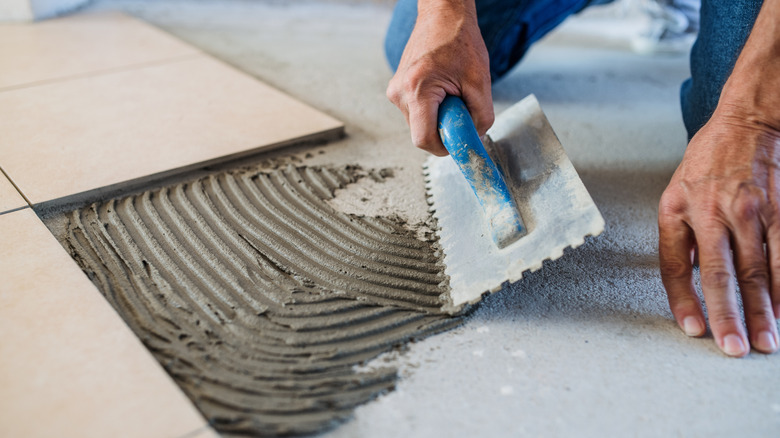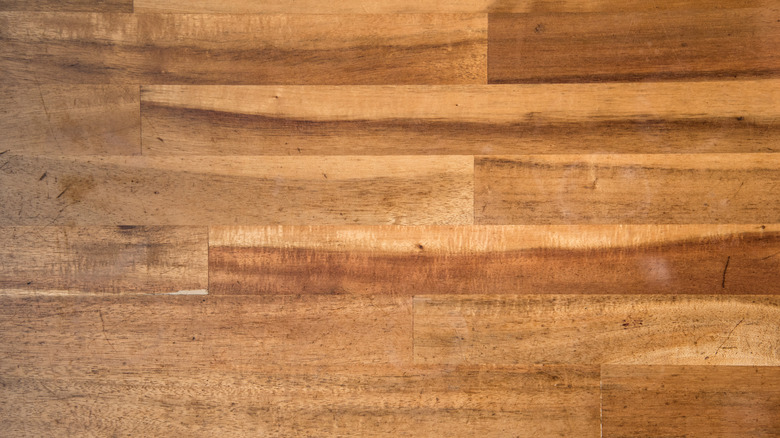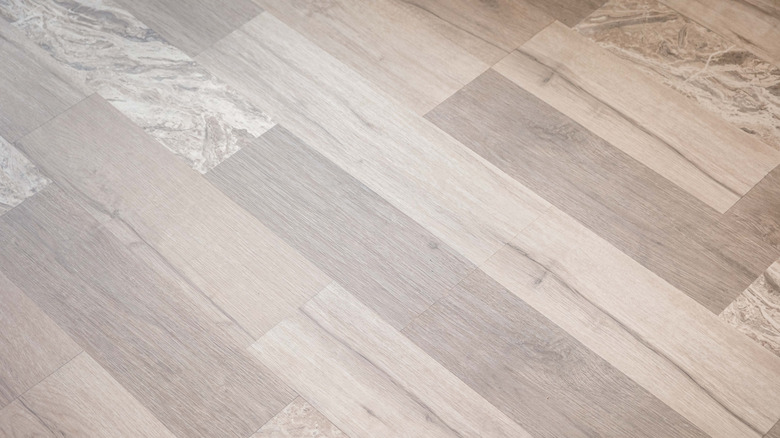The Worst Surfaces And Places To Put Tile In Your Home
When it comes to home renovations, tiles are seen as a miracle solution — sleek, easy to clean, and stylish. However, not every surface in your home is ready for a tile transformation. Some surfaces just aren't designed to be tiled over, and trying to install them in the wrong place could lead to a world of regret. If you had plans to tile the glossy surfaces in your home, any wood flooring, or laminate flooring, get ready to rethink that Pinterest board.
Glossy surfaces and tile? Sounds like a bad date where neither side can keep a conversation going. If you've ever tried to install a tile on a glossy surface, you know the struggle. Glossy finishes, whether on countertops, walls, or floors, do not allow tile adhesive to stick properly, which could lead to cracking and popping tiles down the road. Think about trying to glue something to a slick mirror — you might as well try sticking a magnet to a cucumber. Also, the lack of grip means the tiles might start to lift or warp, and who wants to deal with a floor full of rebellious tiles?
If you want a perfect tile installation, a slightly rough, level surface is key. Glossy walls and floors simply don't deliver. Even with the best preparation, you'll find yourself battling the surface with extra sanding and priming, making this an incredibly time-consuming project that will probably still deliver lackluster results.
Wood flooring and tiles are an unstable pair
While hardwood floors will always be the right choice for a home, they're not the best surface to tile over. Wood floors are sturdy and will grip to tile adhesive, making them look like a safe choice at first glance. Unfortunately, however, there are some other considerations you have to make. Wood floors are highly susceptible to movement, expansion, and contraction depending on the weather and humidity levels. When you lay tiles on wood, they will slowly crack and shift over time because the wood beneath them stretches and shrinks with the seasons.
Another major issue regarding wood flooring and tile installation is the natural imperfections of the wood itself. Wood flooring, especially if it's worn, can have bumps and grooves. These inconsistencies make it difficult for the tile adhesive to stick evenly. And when the adhesive doesn't stick properly, your tiles can start to lift or slide around. This leads to a costly mess you'll eventually have to fix, and no one wants to spend extra money to redo a project they thought was simple.
If you really want a hard surface to cover your wood floor, consider other options like engineered hardwood floors, vinyl planks, or laminate flooring. These options can mimic the look of wood without the instability. If you're still determined to go with tile, it will be necessary to install a plywood, backer board, or cement board underlayment to create a more stable surface.
Laminate floors look cute, but not for tiles
Laminate flooring might look like the perfect candidate for a quick tile makeover, but in reality, it's a bit of a trap. You know, the kind of floor that looks solid on the outside, but underneath, it's a totally different story? That's laminate for you. Laminate flooring is essentially a thin layer of printed plastic or wood on top of particleboard, which isn't exactly the most trustworthy material when it comes to holding down heavy tiles. The surface is slick, and, without plenty of preparation, tiles just can't get a solid grip. Even the best adhesive in the world might struggle to bond with laminate, and before you know it, your tiles will be sliding around like they are on a slip 'n slide.
Laminate's real downfall lies in its instability. Unlike drywall or concrete, laminate doesn't offer the kind of solid surface that tile needs. Laminate is prone to warping, especially if it was improperly installed or there are issues with the subfloor. As the tiles are subjected to daily foot traffic, heavy furniture, or even just the natural wear and tear of life, any unevenness in the base can cause them to crack or detach. It's like building a sandcastle on top of a pillow — there's just not enough support for a sturdy foundation. This can lead to your tiles cracking, lifting, or even completely undone.


